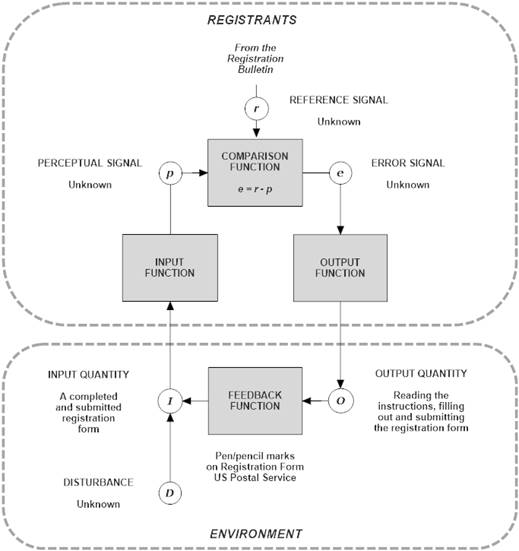[Fred Nickols (2015.11.17.0732)]
Allow me to tell you a little story about using PCT to solve what was called “the reject rate problem.” The diagram below will illustrate as we go.

Shortly after joining ETS as a consultant on staff, the director of one of the operating divisions asked me to look into a situation. The reject rate was way too high and he wanted it lowered. The operation in question processed registration forms submitted by people who wished to take a certification examination for positions in the healthcare industry. Hard copy forms came in, passed through key entry and scanning and were then subjected to computer edits. The reject rate was averaging about 70 percent. The rejected forms were returned to the submitters who were very annoyed. About half of the rejects owed to invalid codes and the other half appeared to be just plain sloppiness. I immediately recognized that the problem tied to the people who filled out and submitted the forms. So, guided by grasp of PCT I set about looking into the situation.
I had no idea what kind of standards the registrants had regarding completing the form but I knew the instructions for filling it out were contained in the registration bulletin. I also wondered just how important the registrants viewed the task of filling out the form. Did they even care if they got it right? I knew of no disturbances but kept that factor in mind.
What I found out was that the instructions made no mention of the fact that failure to completely and correctly fill out the registration form would result in a returned form and that would delay taking the test and getting certified. Nor did the bulletin point out to the registrants that this was important to them as well as to the testing company. Employment hinged on being certified; certification hinged on taking and passing the test; taking the test depended on getting registered and having a seat assigned; and that depended on correctly filling out the registration form. The bulletin instructions were revised to included explanations of these points.
I also looked into the problem of invalid codes. Where did the registrants get those codes I wondered. Turns out the testing company provided a code list to the healthcare institutions where the registrants worked or hoped to be employed. However, the code list was the same one used by the testing company. It was organized numerically, by code. What the registrants needed was a code list organized alphabetically, by institution name so they could quickly, easily find the proper code instead of hunting through hundreds of items on the code list. The code list was also revised. Turns out there was indeed a disturbance: the code list itself.
Immediately after these fixes, the reject rate plummeted to less than 10 percent. The division director said he now had bigger fish to fry so we didn’t try to take it any lower.
If anyone asks, PCT does indeed have practical application in the world of work.
Regards,
Fred Nickols, CPT
DISTANCE CONSULTING
“Assistance at a Distance”
The Knowledge Workers’ Tool Room
Be sure you measure what you want.
Be sure you want what you measure.
